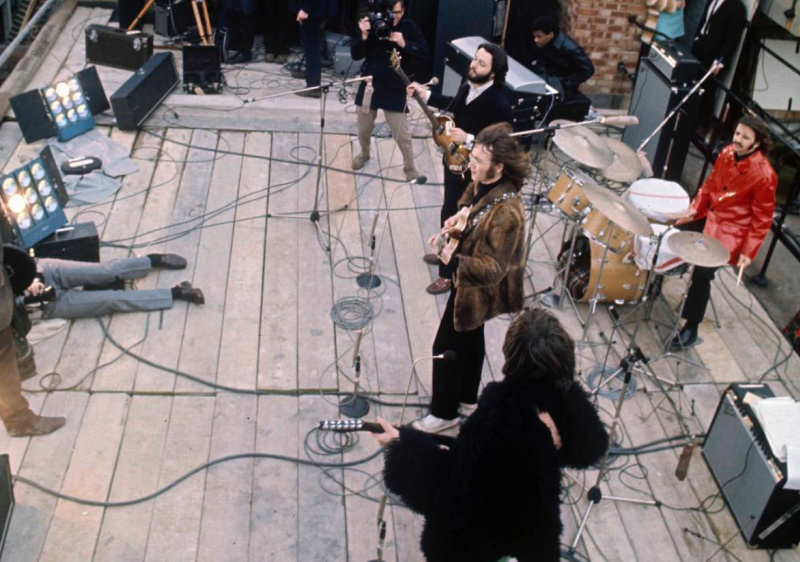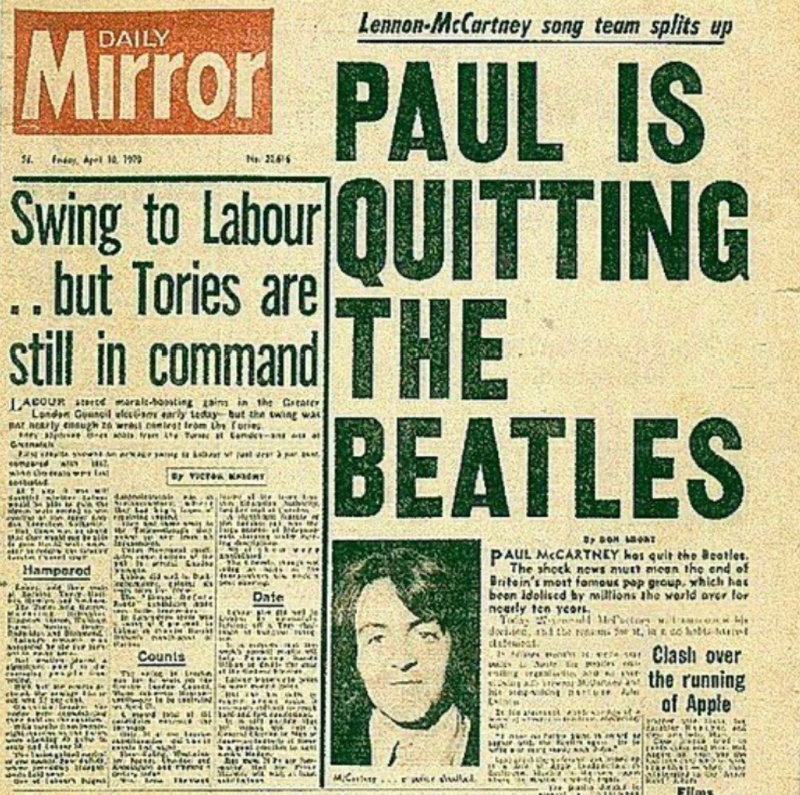
Beatles fans rejoice! It’s time to ‘Come Together’ and ‘Twist and Shout’ in celebration of Global Beatles Day on Saturday, June 25, an annual holiday that honours and celebrates the ideals of the Fab Four.
Fans choose to commemorate Global Beatles Day on June 25 each year after die-hard Beatles fan Faith Cohen first celebrated the day in 2009 in what she called “a thank you or love letter to The Beatles”. The particular date was chosen because it is the same date that the band performed their song All You Need Is Love on Our World in 1967, a program which aired on the BBC to a global audience.
The Beatles are widely regarded as the most influential band in popular music history. With a line-up comprising John Lennon, Paul McCartney, George Harrison and Ringo Starr, they triggered the “Beatlemania” phenomenon of 1963, gained international superstardom in 1964, and remained active until their break-up in 1970.
With massive hits such as Hey Jude, Love Me Do, Yesterday, Eight Days A Week and I Want To Hold Your Hand The Beatles became the best-selling music act of all time, with estimated sales of 600 million units worldwide.
The band holds the record for most number-one albums on the UK Albums Chart (15), most number-one hits on the Billboard Hot 100 chart (20), and most singles sold in the UK (21.9 million).
The band has received many accolades, including seven Grammy Awards, four Brit Awards, an Academy Award (for Best Original Song Score for the 1970 documentary film Let It Be) and fifteen Ivor Novello Awards.
They were inducted into the Rock and Roll Hall of Fame in 1988, and each member was inducted individually between 1994 and 2015. In 2004 and 2011, the group made Rolling Stone‘s list of the greatest artists in history. Time magazine also named them among the 20th century’s 100 most important people.
As Beatles fans from ‘here, there and everywhere’ celebrate the most influential band of all time, Starts at 60 is honouring The Beatles on their special day by exploring their most memorable moments from their formation in 1957 as The Quarrymen, to their take over of the United States in 1964 to their eventual break up in 1970.

Unlike their concerts and tours that would attract millions of watchers, this chance meeting between a 15-year-old McCartney and 16-year-old Lennon was not publicly witnessed by millions but was still a pivotal moment in Beatles’ history.
A church fete at St. Peter’s, Woolton’s Parish Church in Liverpool on a Saturday afternoon set the scene for one of music’s greatest future collaborations. Lennon was playing guitar with his band The Quarry Men while McCartney was attending the fete with his friend Ivan Vaughan to watch the group perform.
In the evening the Quarry Men played again at The Grand Dance and Vaughan, who had played tea-chest bass with the Quarry Men on occasion, introduced Paul to John. Before long, the pair began chatting with McCartney showing Lennon a tuning technique while also playing some songs.
McCartney recalled the momentous meeting fondly.
“I remember John singing a song called ‘Come Go With Me.’ He’d heard it on the radio. He didn’t really know the verses, but he knew the chorus. The rest he just made up himself. I just thought, ‘Well, he looks good, he’s singing well and he seems like a great lead singer to me.’ Of course, he had his glasses off, so he really looked suave. I remember John was good,” he recalled.
Following the meeting, Lennon and fellow band member Pete Shotton discussed whether or not to bring Paul into The Quarry Men. The two band members decided it was a good idea and a few weeks later Shotton spotted McCartney riding his bike through town and asked him to join to which McCartney agreed.

Following the release of Love Me Do on March 22, 1963 and the band’s first album Please Please Me also in the same year, The Beatles went on to release the album Meet the Beatles! which included the iconic I Want to Hold Your Hand. The sophomore album reached number one in the United States bringing the band some attention from across the pond and a legion of new fans.
The ‘British Invasion’ began on February 7, 1964 when the Beatles arrived at JFK airport in New York City for their first-ever American visit. The band departed England with approximately 4000 screaming fans bidding them farewell to arrive in the United States to the same reception after thousands of fans had gathered at the airport to greet the fab four.
The Beatles kicked off their domination of the US with their appearance on The Ed Sullivan Show, their first live US television performance. Approximately 73 million people watched the performance, 34 per cent of the US population.
The band performed All My Loving, Till There Was You and She Loves You. The group returned to play I Saw Her Standing There and I Want to Hold Your Hand. The next week they performed for an episode in Miami Beach where they barely made it through the heaving crowd to perform This Boy, All My Loving, I Saw Her Standing There, From Me to You, and I Want to Hold Your Hand.
On August 15, 1965, the Beatles played for more than 55,000 fans at Shea Stadium in Queens, New York, the show broke records as the biggest ever in regard to crowd size at the time.
The Beatles pocketed $160,000 of the $304,000 box office takings.
The event was promoted by Sid Bernstein, and 2,000 security personnel were enlisted to handle crowd control.The Beatles ran onto the field and took to the stage at 9.16pm, to a barrage of deafening screams. The show was the first on their 1965 U.S. summer tour, and it was also the first-ever open-air stadium rock concert.
In 1970 Lennon famously recalled the concert, claiming “at Shea Stadium, I saw the top of the mountain”.
In August 1966, a magazine titled Datebook ran an article that featured quotes from Lennon claiming The Beatles were “more popular than Jesus”. The quotes had originally been published in the London Evening Standard and received little attention, however, after they were republished they received a series of angry reactions from the Christian community.
Lennon’s commentary on the popularity of the band being greater than religion resulted in mass burnings of Beatles’ records, death threats made against the band, several radio stations refused to play Beatles’ songs and even the Ku Klux Klan picketed their concerts.
Lennon eventually apologised for the comment, stressing that he wasn’t “anti-God, anti-Christ or anti-religion”.
“I was not knocking it. I was not saying we’re better or greater, or comparing us with Jesus Christ as a person or God as a thing or whatever it is. I happened to be talking to a friend and I used the word ‘Beatles’ as a remote thing – ‘Beatles’ like other people see us. I said they are having more influence on kids and things than anything else, including Jesus. I said it in that way, which was the wrong way,” Lennon said.

During work on a self-titled album, known as The White Album, tensions began to rise among the band members. McCartney and Lennon eventually chose to work separately while Ringo Starr quit the band for two weeks. Following the debacle from The White Album production, the band went to work on creating a number of songs with the intent of performing them live.
Again tension rose within the band and George Harrison left the band for five days. The Beatles eventually decided to salvage what they could from the process and on January 30, 1969 the band took to the roof of Apple Corps headquarters at 3 Savile row to perform an impromptu concert much to the delight of passers-by.
The band played a 42-minute set before the police arrived and asked them to reduce the volume. The surprise concert marked the final public performance of their career.

It was a ‘hard day’s night’ when The Beatles officially broke up in 1970, with a series of factors being blamed for the band’s split. Many attributed the split to the pressure from Beatlemania, the death of the band’s manager Brian Epstein, creative differences and Lennon’s relationship with Yoko Ono. Each band member’s desire to pursue individual artistic goals has also been blamed for the band’s split.
Fans of The Beatles have long speculated the cause of the break up with many placing the blame on McCartney following a press release in which he claimed he was leaving the band as well as their manager at the time, Allen Klein, insisting the break up be kept under wraps.
McCartney recently set record straight on The Beatles’ infamous split in a BBC Radio interview claiming that it was Lennon that “instigated” the break up.
In excerpts from the interview published by The Guardian, McCartney called the split “most difficult period of my life” and addressed the breakup when questioned about his decision to pursue a solo career.
“I didn’t instigate the split. That was our Johnny,” he said.
“Stop right there. I am not the person who instigated the split. Oh no, no, no. John walked into a room one day and said I am leaving the Beatles. Is that instigating the split, or not?”
Lennon reportedly informed his fellow bandmates privately that he was leaving the Beatles, however fellow members were left unclear as to whether the move was permanent. Both Starr and Harrison had also previously quit the band, Ringo taking leave of them for two weeks during the recording of The White Album and Harrison amid creative differences in 1969, although he later returned.
McCartney went on to express sadness over the band’s split.
“This was my band, this was my job, this was my life, so I wanted it to continue.” he said.
Despite rumours of a reunion, all four members of The Beatles sadly never performed together again. However, there were occasions where members did collaborate on projects such as Starr’s “I’m the Greatest” (1973) and Harrison’s “All Those Years Ago” (1981) that featured three ex-Beatles.
Following Lennon’s murder in 1980, the surviving member of The Beatles reunited for The Anthology Project in 1994 where they released unfinished demos of Lennon’s songs in tribute to their former bandmate.